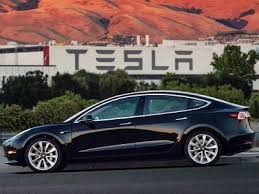Tesla Shares Surge Following Its Largest Loss Ever

Electric vehicle (EV) maker Tesla Inc (NASDAQ: TSLA) reported earnings after the closing bell yesterday. Each time earnings are released I always wonder if it will start a stampede of investors fleeing the company. Of course, many analysts — including several here at Investing Daily — have expressed similar sentiments. Just for comparison, Tesla has a market capitalization 30% higher than that of Ford Motor Company (NYSE: F), despite the fact that Ford sells 80 times more cars.
Of course, Tesla and its leader Elon Musk have legions of fans, and the result is what I believe is a disconnect between Tesla’s share price and the underlying value based on any number of fundamental valuations. Tesla trades at an “Elon Musk premium” which makes it an especially challenging company to trade. Plenty of respected analysts were calling Tesla overvalued when shares were priced half what they are today, but the company continues to defy expectations. Investors seem to believe Tesla will ultimately score huge profits while facing no competitors.
Prior to yesterday’s earnings release, I reviewed earnings estimates for the company. Many analysts were bearish and expected shares to trade down following results that they expected to disappoint. In fact, one trader went on CNBC and described how to make a low-risk bet against Tesla going into the earnings release:
“To take advantage of the increased price of options ahead of earnings, [Todd] Gordon wants to sell the Aug. 4 weekly 335-strike call and buy the Aug. 4 weekly 340-strike call for a credit of about $ 1.25, or $ 125 per options spread. Gordon will get to keep that entire credit if Tesla closes below $ 335 on Aug. 4 expiration. If Tesla sees a nice rally and closes above $ 340 on Aug. 4, Gordon will lose the maximum of $ 375.”
The analyst estimated an 80% probability of success on this trade. I decided to track it by executing my own paper trade on the TD Ameritrade (thinkorswim) platform a few hours prior to the earnings release. The share price had traded a bit higher during the day, so my paper trade netted $ 165 on the options spread. (Note: If you are really interested in profitable options strategies, our resident guru Jim Fink has a phenomenal track record).
As soon as earnings were released, I started to study Tesla’s financials. The company burned through another $ 1 billion during the quarter, which was about 86% higher than the cash it burned through in the previous quarter. The quarterly loss attributable to shareholders increased to a record $ 336.4 million, up from $ 293.2 million a year earlier. But the adjusted loss per share beat consensus expectations at -$ 1.33 vs. -$ 1.82 expected. (For perspective, a year ago analysts had projected that Tesla would earn 62 cents a share this quarter). The primary reason for better-than-expected earnings was that Tesla sold $ 100 million in zero emission vehicle (ZEV) credits during the quarter.
Overall there were some bright spots (the loss wasn’t as bad as projected and revenues doubled) and some negatives (high cash burn, record loss, customer deposits declined, fewer Model 3 reservations than has been widely reported).
But Tesla doesn’t trade like most stocks. I have complained that for oil and gas stocks this year, bearish news seems to outweigh bullish news by a factor of three or four. Tesla is just the opposite. Positive news gets a far greater reaction than negative news. Tesla shares closed on Wednesday below $ 326 (up 1.98%), but within minutes of the earnings release shares jumped $ 16.
Then the earnings call started, and despite a lot of technical difficulties during the call, Elon Musk assured investors that everything was good (even as he admitted that the Model 3 numbers being touted didn’t account for 63,000 cancellations). As he spoke, the share price jumped another $ 10 to reach $ 350.
And that trade that looked like a no-brainer? The $ 25 jump in the share price after hours means the analyst recommending the trade is going to lose the maximum unless shares retreat below $ 340 when the options expire on Friday. If they close below $ 335, then he stands to make a maximum profit.
In closing, I do consider myself a fan of the automobile. The CEO of my company owns one, and I have ridden in it several times. The car has a lot going for it. But I believe that we will eventually see that Tesla’s share price reflected a disconnect between perceptions and the underlying value based on company fundamentals. Many others have suggested the same. Time will tell. As many times as I have been tempted to short the company, yesterday’s action following the earnings release reminds me of why I don’t.
Follow Robert Rapier on Twitter, LinkedIn, or Facebook.





